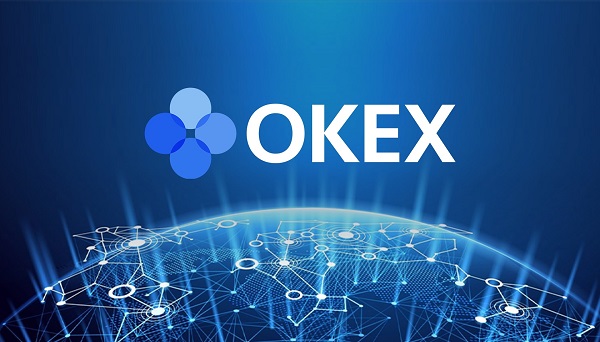Crypto mixers’ relevance wanes as regulators take aim

Cryptocurrency mixers have been an interesting topic of discussion ever since the advent of cryptocurrencies and their adoption by retail investors around the world.
Cryptocurrency mixers are services that essentially focus on one feature of a blockchain network: privacy.
Cryptocurrency mixers, also known as tumblers, provide anonymity so no one can trace the sender or receiver of a transaction. This can help protect the identity of individuals who want to be completely anonymous and non-traceable. How cryptocurrency mixers work is that they break down the funds sent using the mixer and scramble them with other transactions. They break the link which associates the holder’s identity to the crypto they own.
A process used to anonymize cryptocurrency transactions is known as CoinJoin, created initially back in 2013 by Bitcoin (BTC) developer Gregory Maxwell. In the thread on the Bitcointalk forum, Maxwell elaborated on how these transactions are structured and how the privacy of the transitions can be significantly enhanced without making huge changes to the network. Essentially, this concept involves a mixing block box from where users get their transactions and comprises hundreds of transactions from various wallets. CoinJoin is one of the most popular cryptocurrency mixers on the market.
There are primarily two kinds of mixers, centralized and decentralized mixers. Centralized mixers receive cryptocurrency from users into the mixer and send back different cryptocurrencies by charging a fee. The transaction addresses of the several users who deposit their cryptocurrency into the mixers are managed by a program. Cryptocurrencies returned to users are not the same as those initially deposited, and they may be returned to the user’s account through more than one transaction.
In contrast, decentralized mixers utilize other crypto protocols to obscure transactions using either a coordinated network or peer-to-peer (P2P) networks. Cointelegraph discussed the pros and cons of centralized and decentralized mixers with Marie Tatibouet, chief marketing officer of crypto exchange Gate.io. She said:
“Centralized services are obviously more accessible and more approachable. However, they will have access to your Bitcoin and IP addresses. Hence, they are not the most private service in the world. Decentralized mixers can be a little less approachable, but they are a lot more private.”
Related: What is a cryptocurrency mixer, and how does it work?
However, cryptocurrency mixers and tumblers have a bad reputation since they may be used for money laundering or masking huge amounts of earnings. Although not illegal by law, the service providers stand a chance to get embroiled in a crypto money-laundering investigation. There have been several instances where cryptocurrency mixers and their users have come under the scanner by various jurisdictions and governments.
Mixers could be in a gray area
Most recently, the United Kingdom’s National Crime Agency wants to regulate cryptocurrency mixers under the country’s relevant Anti-Money Laundering (AML) laws.
The agency’s head of the financial investigation, Gary Cathcart, said that transaction mixing tools offer a layer of anonymity to criminals, allowing them to maintain the flow of criminal cash by obscuring its origin.
According to Cathcart, subjecting mixers to AML laws would ensure that mixing services conduct thorough AML checks and audit all the transactions that are passing through the mixer. While on the surface, this might seem like an idea that works, there is a high possibility that such checks would discourage any users attempting to use the mixer.
A closer look at the numbers reveals that the concerns of the crime agencies are not without reason. A recent report from blockchain analytics firm Chainalysis called “2022 Crypto Crime Report” found that the total cryptocurrency value received from illicit addresses hit an all-time high of $14 billion in 2021, nearly doubling from $7.8 billion in the previous year.
At the same time, it is also worth noting that the total market capitalization of the entire market has grown significantly along with the adoption of digital assets by retail investors. Chainalaysis’s crime report also highlights the Illicit percentage share of all cryptocurrency currency, which was at a four-year low of 0.15% in 2021.
This indicates that as the digital asset market develops further, the checks and balances being placed on transaction routes by market participants have been acting as a deterrent for criminals and money laundering activities alike. In fact, most of the transactions flagged as received from illicit addresses are from hackers that stole funds from various DeFi protocols like Wormhole and Poly Network in 2021.

Anton Gulin, regional director at crypto exchange AAX, told Cointelegraph that the whole essence of mixers is not illegal by default. “However, some countries are steadily imposing the Financial Action Task Force’s Travel Rules, providing that exchanges and other virtual asset market players must collect, verify and transmit originator and beneficiary customer information for any cryptocurrency transaction.”

The imposition of this rule prevents regulated entities like centralized exchanges from receiving funds from mixers, which, in turn, puts the entire activity into a gray area. Adrian Jonklass, head of research at blockchain API provider Covalent, told Cointelegraph:
“They operate in a gray area because at a global level the regulations around fundamentals of what comprises virtual assets, whether they fall under money transfer regulations, and or commodity regulations and or securities regulations and or some new category is still being developed.”
The FATF’s rule on the digital assets industry has the potential to curb activity even further. A survey of crypto businesses conducted by Notabene, a crypto compliance firm, found that 70% of the respondents are either already following the Travel Rule or are planning to align their compliance to it in early 2022.
Relevance of crypto mixers in 2022
While cryptocurrency mixers are originally designed to further anonymity and privacy, the evolution of blockchain technology and innovations like whitelisting and decentralized identifier protocols could make them less relevant.
Guilin said that there is no apparent benefit to using a crypto mixer in 2022, stating that “by now, it’s widely associated with something illegal and is indeed related in the majority of cases. Therefore, most of the mixer addresses have been clustered by Know Your Customer providers and are easily traceable.”
This means that users cannot use their funds after mixing them without being traced by the market participants, as transactions withdrawn from a mixer are marked and go against the logic of using a mixer in the first place.
Cryptocurrency mixers definitely still have the potential to appeal to the original crypto romantics that consider the privacy and anonymity of their cryptocurrency transactions a high priority.
However, their relevance today could be waning due to the retail adoption models and other checks and balances that the market participants in the ecosystem are now utilizing. The industry and blockchain technology at large have evolved exponentially since Maxwell spoke of the concept of CoinJoin; It could be important for service providers to realize this as well.












